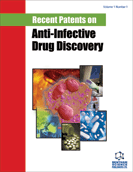Abstract
Perception on bioterrorism has changed after the deliberate release of anthrax by the postal system in the United States of America in 2001. Potential bioterrorism agents have been reclassified based on their dissemination, expected rate of mortality, availability, stability, and ability to lead a public panic. Brucella species can be easily cultured from infected animals and human materials. Also, it can be transferred, stored and disseminated easily. An intentional contamination of food with Brucella species could pose a threat with low mortality rate. Brucella spp. is highly infectious through aerosol route, making it an attractive pathogen to be used as a potential agent for biological warfare purposes. Recently, many studies have been concentrated on appropriate sampling of Brucella spp. from environment including finding ways for its early detection and development of new decontamination procedures such as new drugs and vaccines. There are many ongoing vaccine development studies; some of which recently received patents for detection and therapy of Brucella spp. However, there is still no available vaccine for humans. In this paper, recent developments and recent patents on brucellosis are reviewed and discussed.
Keywords: Biotechnology, bioterrorism, brucellosis, decontamination, diagnosis, patents, Salmonella typhimurium, polymorphonuclear leukocytes, bioterrorism, bioweapon
 63
63





















